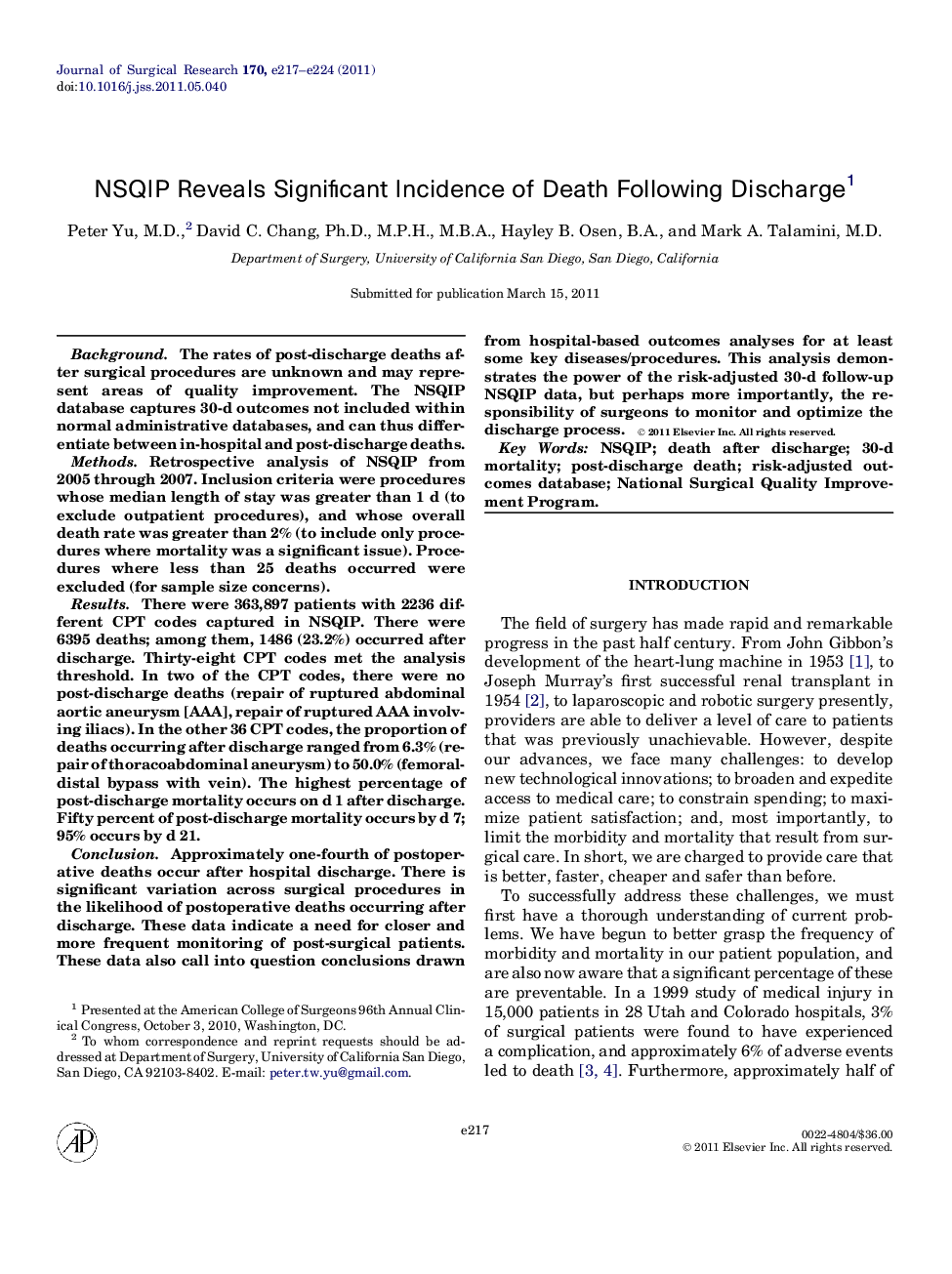| کد مقاله | کد نشریه | سال انتشار | مقاله انگلیسی | نسخه تمام متن |
|---|---|---|---|---|
| 4302134 | 1612529 | 2011 | 8 صفحه PDF | دانلود رایگان |

BackgroundThe rates of post-discharge deaths after surgical procedures are unknown and may represent areas of quality improvement. The NSQIP database captures 30-d outcomes not included within normal administrative databases, and can thus differentiate between in-hospital and post-discharge deaths.MethodsRetrospective analysis of NSQIP from 2005 through 2007. Inclusion criteria were procedures whose median length of stay was greater than 1 d (to exclude outpatient procedures), and whose overall death rate was greater than 2% (to include only procedures where mortality was a significant issue). Procedures where less than 25 deaths occurred were excluded (for sample size concerns).ResultsThere were 363,897 patients with 2236 different CPT codes captured in NSQIP. There were 6395 deaths; among them, 1486 (23.2%) occurred after discharge. Thirty-eight CPT codes met the analysis threshold. In two of the CPT codes, there were no post-discharge deaths (repair of ruptured abdominal aortic aneurysm [AAA], repair of ruptured AAA involving iliacs). In the other 36 CPT codes, the proportion of deaths occurring after discharge ranged from 6.3% (repair of thoracoabdominal aneurysm) to 50.0% (femoral-distal bypass with vein). The highest percentage of post-discharge mortality occurs on d 1 after discharge. Fifty percent of post-discharge mortality occurs by d 7; 95% occurs by d 21.ConclusionApproximately one-fourth of postoperative deaths occur after hospital discharge. There is significant variation across surgical procedures in the likelihood of postoperative deaths occurring after discharge. These data indicate a need for closer and more frequent monitoring of post-surgical patients. These data also call into question conclusions drawn from hospital-based outcomes analyses for at least some key diseases/procedures. This analysis demonstrates the power of the risk-adjusted 30-d follow-up NSQIP data, but perhaps more importantly, the responsibility of surgeons to monitor and optimize the discharge process.
Journal: Journal of Surgical Research - Volume 170, Issue 2, October 2011, Pages e217–e224